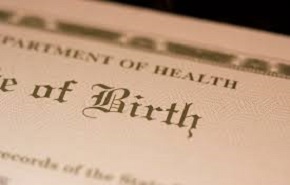
Vital records are primary documents that are used in genealogy to validate information about an ancestor. Vital records are obtained from either the State Vital Records department and the State Archives in which the ancestor either lived and/or died. Vital records refer to birth, marriage and death records.
Birth Records
In most states, local governments did not require births to be recorded until the early 1900s. Birth records have the following information:
- Name of child at birth
- Date and place of birth
- Gender and race of child, also if child was a single birth or part of multiple births
- Name, birthplace, occupation, and age of father at child's birth
- Maiden name of mother, birthplace, occupation, and age of mother at child's birth
Marriage Records
Marriage records are easily obtainable from county/parish courthouses and state archives. Marriage records give clues to family lineage using the following information:
- Name of the groom
- Maiden name of the bride
- Date of the marriage ceremony
- Officiant who performed ceremony (which also gives clues about the religion of the couple and can be used to identify church records that may also have information)
- Age of the bride and groom at marriage
- Parents' names of the bride and groom
Death Records
Death records are more accessible than any other vital records. Death records were recorded since the mid-19th century. State government agencies are more lenient with access to death records since the person is deceased. Death records contain the following information:
- Name of the deceased at time of death
- Name of spouse or next of kin
- Name of the parents of the deceased, including mother's maiden name
- Locality of deceased's birthplace
- Most recent address of the deceased
- Occupation of the deceased before death
- Date and cause of death
- Place of burial
Note: The Social Security Index is not considered vital records, however, it is an index to deaths of individuals who were in the Social Security system. The Social Security Index provides clues to assist researchers in finding the birth date, death date, last residence and name variations of the deceased used in the Social Security system.



Add a comment to: The Importance of Vital Records for Genealogy Research